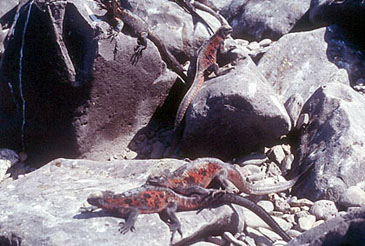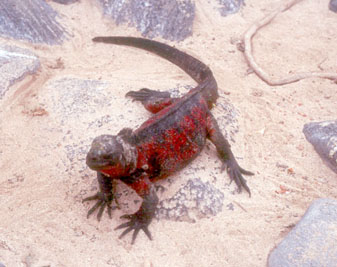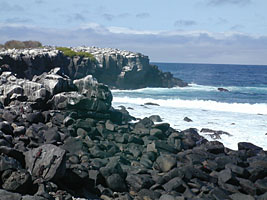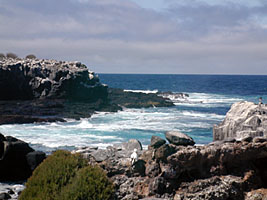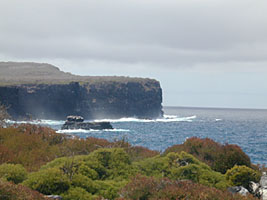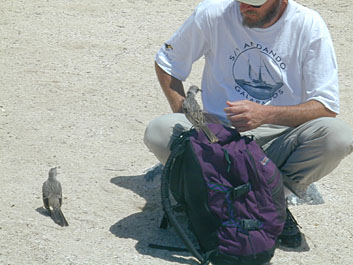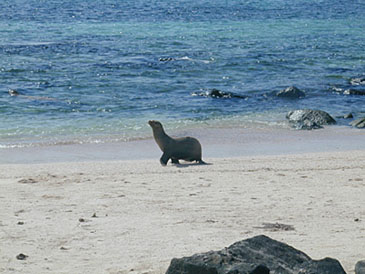|
A Galápagos land iguana on South Plaza. More yellowish in color than their relatives on the mainland, they feed on the flowers and pads of prickly pear cacti. |
South Plaza. Many visitors are surprised to find much of the archipelago's land area covered by semi-desert and desert vegetation. The islands lie in the Pacific Dry Belt. More information on the Galápagos' dry and moderate climate can be found here. |
|
Marine iguanas, the only sea-going lizard in the world, on Isla Española. They have flat tails used for swimming and can dive to a depth of forty feet and stay under water for up to an hour. To conserve heat, marine iguanas simply aggregate, or pile together. |
A marine iguana takes to the water. They eat an array of marine algae, as well as crustaceans and insects. |
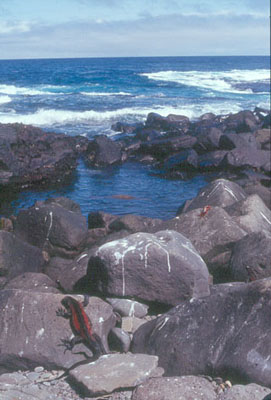 |
|
|
Isla Española has some rugged and beautiful coastline. |
Like I said before, the wildlife is fearless. Wildlife here has few predators.
A young sea lion sturts along the beach on Isla Española. |





